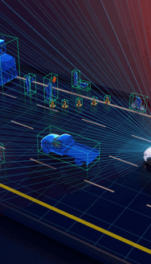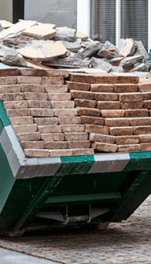Draw-wire encoders: measuring long lengths
How does a draw-wire encoder work?
In contrast to a ruler or tape measure, a draw-wire has no markings on it. Instead, the length is calculated according to the number of revolutions made by the internal shaft. The draw-wire encoder works in a similar way to a potentiometer. A ball rotates over a foil attached to the inside of a cylinder. The ball makes contact between the two carbon tracks on the foil, and determines the resistance value of the circuit.
There are also modern draw-wire encoders available that monitor rotations using a rotary encoder. The traditional model based on foil and carbon tracks is still by far the most common.
Advantages of draw-wire encoders
The advantage of a draw-wire encoder is that it can measure large displacements, and outputs the result as an absolute value. It can be used in demanding environments such as on large forklift trucks or on ship cranes in the offshore industry. As long as the cable can withstand these conditions, a draw-wire encoder works very well. This more vulnerable sensor should be placed inside a protective housing.
Disadvantages of draw-wire encoders
A draw-wire encoder cannot handle vibrations or other disturbances such as wind that inadvertently act on the extended cable. The sensor in the box cannot detect the difference between these actions and real movements, so you have to take this into account in the design of the measuring system.
Another disadvantage of a draw-wire encoder is that it contains moving parts such as a ball that rolls over the foil and a cable that is rolled out and then in again by the action of a leaf spring. This makes the system sensitive to wear. The technology is now so far advanced that the cable of a draw-wire encoder can be pulled in and out hundreds of thousands of times. Even so, this may still prove insufficient for highly dynamic applications.
Draw-wire encoders vs. potentiometers
Compared to a potentiometer, a draw-wire encoder is much less affected by forces in other directions. This is because the cable is a lot more flexible than the rigid shaft in a linear potentiometer.
Coming soon: draw-wire encoders
We’re working hard behind the scenes on preparing draw-wire encoders for inclusion in our online sensor database. If you need to know more about the technical specifications of level sensors right now, we understand. We recommend you request information from our sensor specialists until the database has been updated. Send an e-mail with your question.







